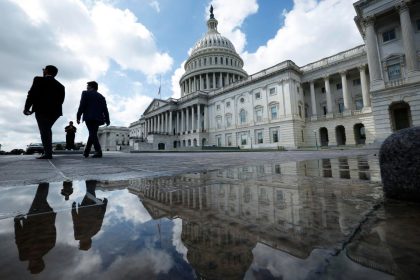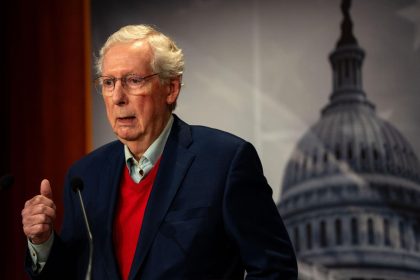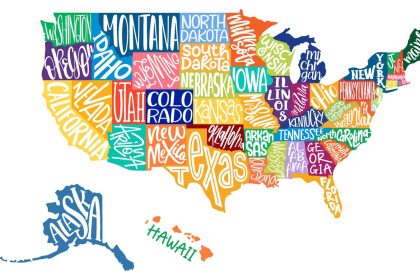In a landmark ruling, the Supreme Court has given federal courts broad new authority to curb the powers of federal agencies. While the immediate case involved regulation of fishing boats, the decision may have a major impact on the ability of the Treasury and IRS to write regulations that clarify gray areas in the tax code.
The 6-3 decision in Loper Bright Enterprises v. Raimondo amplifies the high court’s efforts to limit what conservatives call the “administrative state.” In recent days, the justices curbed the Environmental Protection Agency’s ability to reduce air pollution and barred the Securities and Exchange Commission from using administrative proceedings to adjudicate fraud cases.
A Tombstone For Chevron
The Loper Bright ruling scraps the standards the court itself set in a 1984 case called Chevron U.S.A., Inc. v. NRDC. Since Chevron, judges generally have deferred to federal agencies’ interpretations when statutes are “ambiguous,” as long as their conclusions are “reasonable.”
While “reasonable” is open to broad interpretation, the Chevron doctrine governed judicial oversight of regulations for 40 years. In a friend of the court brief, law professors Kent Barnett and Christopher Walker called Chevron “bedrock precedent” that has been cited in 17,000 court decisions.
Even so, the majority was clear: Chevron, it said, is based on a “fiction.” It is “fundamentally misguided” and “unworkable.”
They said, “Courts may not defer to an agency interpretation of the law simply because a statute is ambiguous. Chevron is overruled.”
While the court majority reversed Chevron because it said it violated administrative law, two justices — Clarence Thomas and Neil Gorsuch — went further and declared it unconstitutional. Added Gorsuch, “The court places a tombstone on Chevron no one can miss.”
The Dissent
Loper Bright involved a dispute over regulation of commercial fishing boats. But many conservative advocates (here and here) used it as an opportunity for the Supreme Court to vastly expand its recent, incremental efforts to limit executive branch authority. And the court majority grabbed it.
In their dissent, Justices Elena Kagan, Sonia Sotomayor, and Ketanji Brown Jackson called the decision “judicial hubris.” They said judges often lack the expertise needed to address complex and often highly technical issues and should continue to defer to administrative agencies when the law is unclear. They also noted that Congress has had 40 years to reverse Chevron and never has done so.
Tax Law Impact
Regulatory flexibility is especially important for tax law. Congress frequently leaves it to Treasury and IRS to fill in statutory gaps, either because taxes are so complex or because lawmakers cannot agree on how to address a specific issue. Indeed, lawmakers often leave implementation of tax law to the IRS and Treasury because they know they can, thanks in large part to Chevron.
On Capitol Hill, the opportunities for policy gaps or mistakes are enormous. Tax law often is written at the last minute by nonexperts gathered in a backroom. They rarely have the opportunity to seek out technical advice and thus leave it to regulatory experts to identify problems and solutions.
One key question that Loper Bright may not have resolved: How much discretion will Treasury and IRS have when Congress expressly asks them to fill in those statutory blanks? The majority left the door open by saying, “That is not to say that Congress cannot or does not confirm discretionary authority on agencies. Congress may do so, subject to Constitutional limits.”
It could, but will it in today’s hyperpartisan environment?
Now, Treasury and IRS likely would be guided by older opinions, including the 1979 Supreme Court decision in National Muffler Dealers Association v. United States. But in a recent article, Loyola Law School tax professor emerita Ellen Aprill concluded, “The results of its application are uncertain. Sometimes deference figures prominently, sometimes hardly at all.”
Complicating Life
The Chevron ruling comes at a time when the IRS has been getting significant pushback from courts. Loyola’s Aprill says the agencies may need to ask for public comments more often as a way to strengthen their case for “reasonableness.” But even by doing that, their authority to write regulations without being second guessed by judges is now less clear.
Treasury and IRS still would retain authority to write some regulations, especially for new laws, without constant judicial intervention. But without Chevron’s judicial guardrails, regulators would have far less flexibility to address changing circumstances. For example, would they still be able to write tax rules that apply to cryptocurrency, which is evolving far more rapidly than Congress can respond?
Repealing Chevron extends the court’s recent enthusiasm for weakening executive branch power. But it may upend the way Congress writes tax law, create an administrative mess for Treasury and the IRS, and complicate life for taxpayers who crave and deserve legal clarity.
Read the full article here





